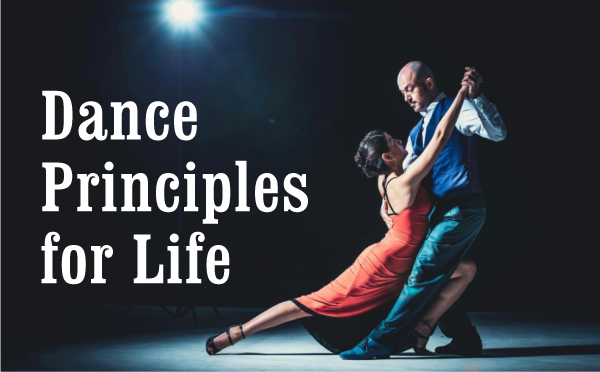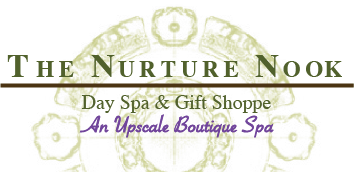Dance Principles for Life

If you know me, you know I love ballroom dancing. Over the past decade I have increased my knowledge and capabilities by learning as much as I can handle (sometimes a lot, and sometimes only a little at a time) to become better. “Better,” to me, means more graceful. More fluid. More reach. More tone. More moves. More rhythm. More musicality. More movement overall with greater ease. Communication with a partner without words.
All of these are principles that can be compared to life!
Some of the main principles in partner dancing are 1) You have to connect with yourself first. This means having your frame tall, shoulders engaged, poised to be able to stand still or be able to be moved. 1a) Engaging your core. Being ready to move from a centered point 2) Connection of your feet with the floor. This allows you to move more fluidly, firmly and flexibly. Feel your feet on the floor. As your feet move they remain connected to the floor for more graceful movement. 3) Connecting with your partner. Body contact with hands and arms typically. Some dances call for even more connection. 4) Eyes up. Don’t look at your feet. Keep your eyes on the horizon or on your partner. With proper connection you will feel the direction your partner is moving you.
Be like a tree: Stay grounded. Connect with your roots. Turn over a new leaf. Bend before you break. Enjoy your unique natural beauty. Keep growing. — Joanne Raptis
The epiphany hit me when my instructor pointed out these elements. In order to have a more synchronistic partner experience, I first must be prepared myself. I must be poised and grounded all by myself before I can really be “at one” with a partner. Sure, we could dance together, but without being connected in the aforementioned ways first, our time together could be less flowing, restricting, shaky or altogether awful.
Other notable elements or principles of dance are body, action, space, time, energy and shape. Understanding these and how to apply them can create a work of art. Another ability to use is humor. Humor makes the experience enjoyable for both partners. If something doesn’t go as planned it is most helpful to be able to laugh it off and try again. You have a body that you must care for in order for it to function properly. There is also a framework that you try to work within to make moving easier and seamless.
Dance requires action—movement. This movement takes you in many directions. Your flexibility allows you to move more effortlessly when you shift and go in another direction. Space provides the atmosphere for expression; limitless possibilities within the space you have. Space to explore, improvise and express. Time gives you the freedom to create in the moment. Energy is what moves the partnership forward or makes it stand still. Shape is what develops out of coordinated movements.
“I hadn’t realized that music could unlock things in you, could transport you to somewhere even the composer hadn’t predicted. It left an imprint in the air around you, as if you carried its remnants with you when you went.” — Jojo Moyes
Other aspects to explore are the leader, the follower, extension, compression and maintaining connection. The yin/yang of extension and compression in the moment is to expand fully with one part of your body (arm stretched away from your body as far as possible) while you compress a connecting point with your partner (usually your hands, but could be another part of your body) creating a full body extension, or reach. Even with this expanded reach you should be able to maintain that position if your partner disconnects from you. That’s how important it is to be grounded with yourself first, above all.
The leader leads, taking their partner with them. If the leader has no strength in his frame then there is confusion about where to go. The journey will be wobbly with misunderstanding. The follower needs to be poised to follow, as well. This means they are prepared (grounded) to dance alone but are in a strong position to be able to follow where a grounded leader will guide them. If the leader is really solid, the follower could experience something magical without even knowing what just happened! I have had a couple of leaders that were so solid in their own framework that I felt like I really was a “dancer” and was on a magical carpet ride. When I asked one of these gentlemen why dancing with him felt that way, he replied that he “discovered he only needed to be responsible for how he danced, not for how his partner danced.” So, if he just concentrated on his part the whole partner experience tended to be better. Not always magical, but definitely better.
Putting yourself first doesn’t mean you don’t care about others. It means you’re smart enough to know you can’t help others if you don’t help yourself first. — Helen Barry
One of my favorite principles is maintaining connection. This requires attentiveness, focus, ability to pivot when things get off track, and flexibility. When you know the goal of keeping the connection is to maintain harmony, flow and ease of movement, it makes you want to practice these principles in order to more fully enjoy yourself and help your partner have a good, if not memorable experience. So, dance in the flow of life and live in the dance of the flow.
“To watch us dance is to hear our hearts speak.” — Indian Proverb
